Hidden Treasures of NRW: the Externsteine
I had promised myself that I would work this Saturday. By lunchtime, I had already purchased groceries, cooked lunch and finished a major powerpoint presentation. The weather was surprisingly good and I decided it was harsh to spend the rest of the day indoors. Thankfully, there are many interesting places very close to Paderborn and I decided to explore one such place: the Externsteine! The Externsteine is a sandstone rock formation located in the Teutoburg Forest, near the town of Horn-Bad Meinberg (half hour long train ride from Paderborn).
Taking a short impromptu trip is exciting but has its own challenges. My guide was Google maps, who betrayed me at the last moment! I was standing alone in a beautiful forest and Google maps said “You have arrived”. I knew the Externsteine are huge rocks so I was sure I had in fact not arrived. Thankfully I saw two German guys taking the same forest trail and I asked them for directions. Being a Mumbaikar really spoils you because you just assume that anyone you meet will give you perfect and elaborate directions. Oh well, all I got from them was a reluctant and quick answer: “Links (left)”. So on a trail with many many turns, I kept taking left till no more left was left.
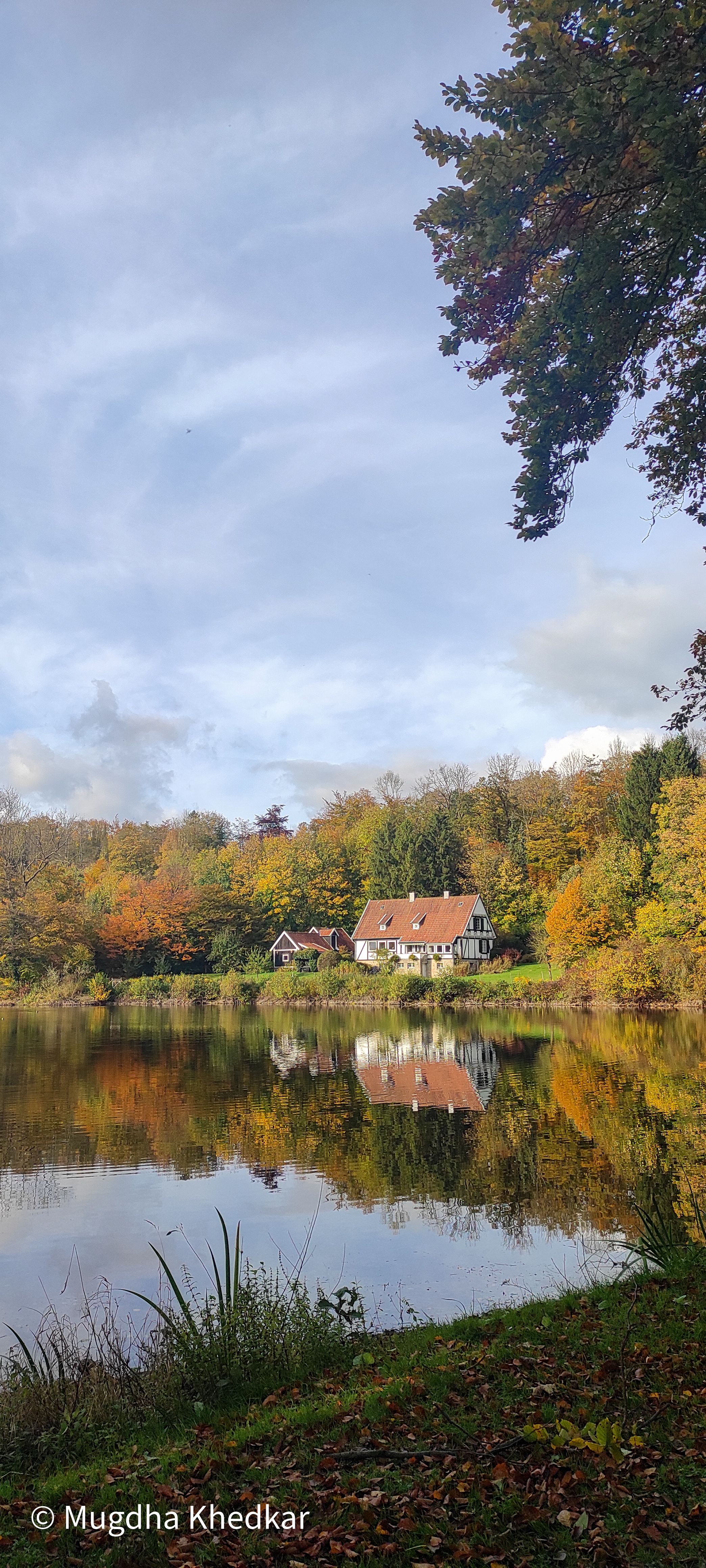
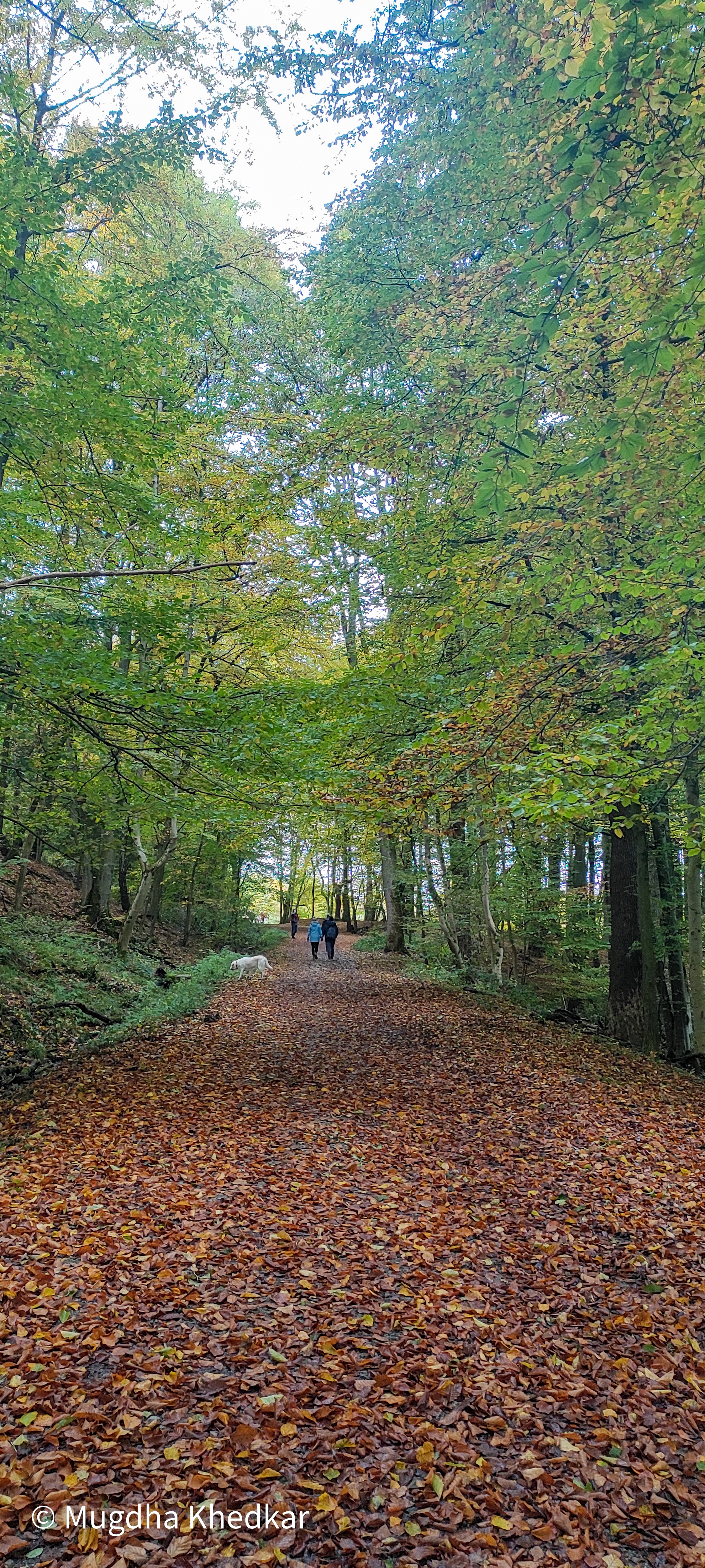
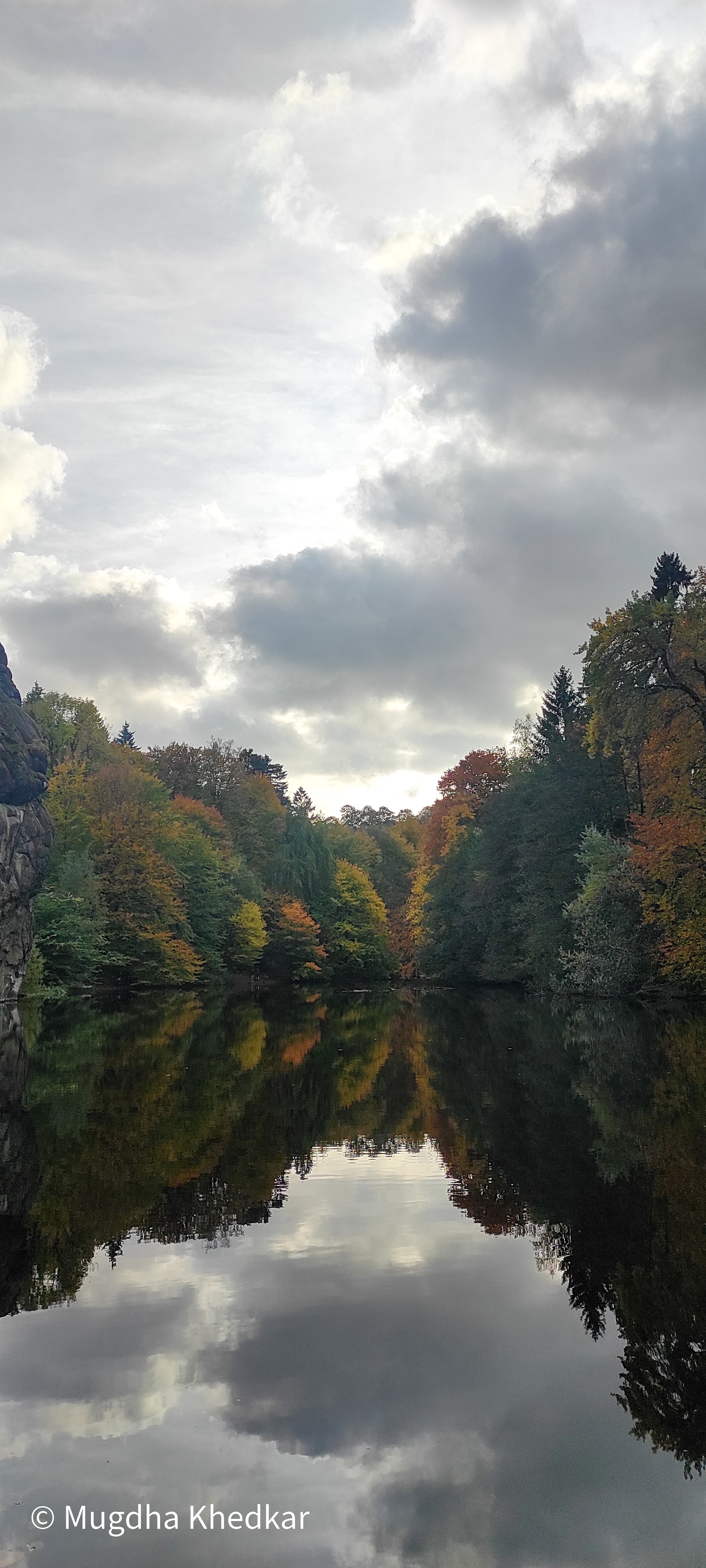
Left to Right: Artificial pond near the Externsteine, the forest trail, the beautiful autumn display in front of the Externsteine
I realised that I was on the correct path because I saw a sea of tourists in front of me: staring awestruck at the giant structures: the Externsteine. My first thought was: beautiful but bizarre! The giant Externsteine sandstone pillars have been standing in the Teutoburg Forest since the Ice Age. Millions of years ago, some horizontal layers of rock were shifted into a vertical position and presumably owe their current extraordinary form to the action of water over millions of years and the friction of ice during the Ice Age. The first mention of the stones is in a document dated to around 11291. Some authors have argued that the carvings and alterations to the stones may suggest use of the site as a Christian sanctuary from the early 9th century.
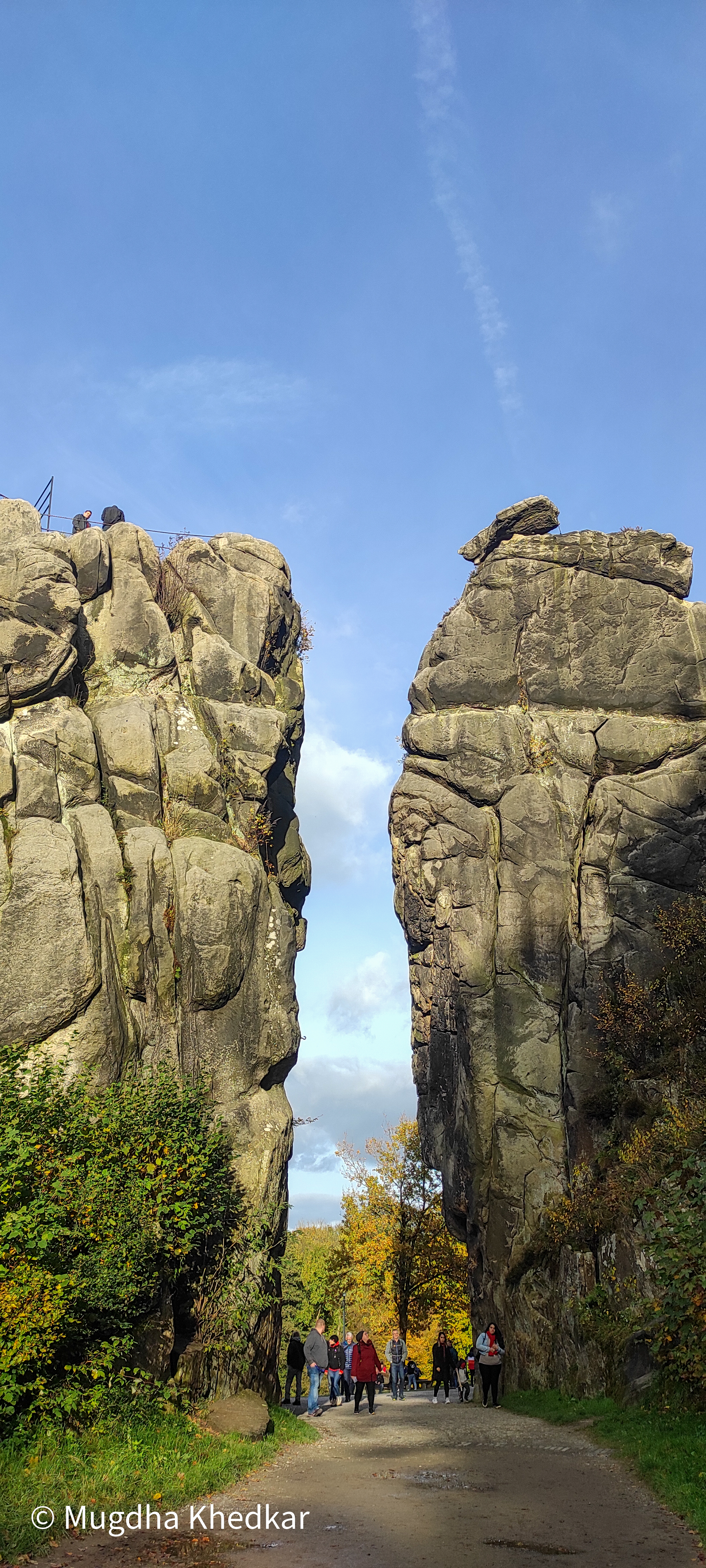
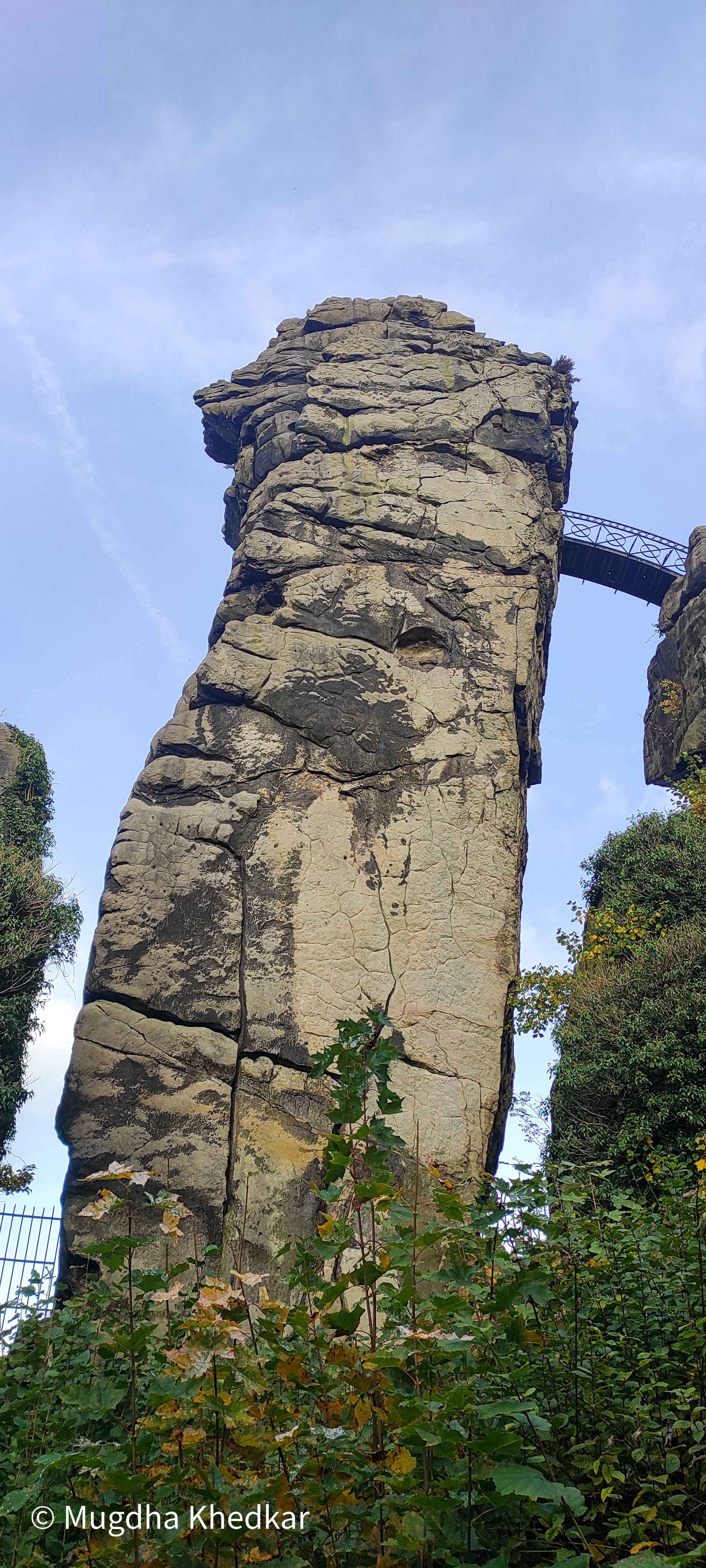
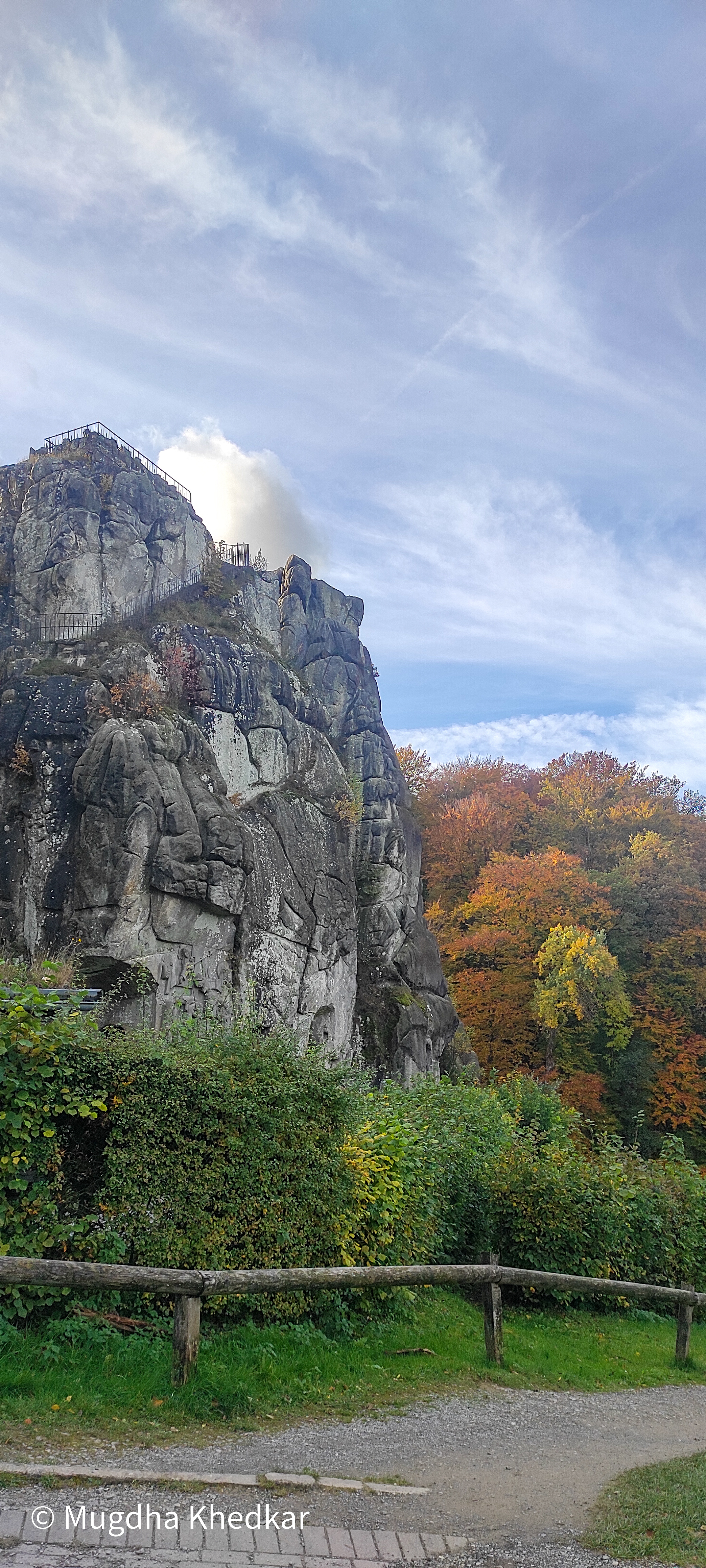
There are numerous things about the stones that are still a mystery: the origin of their name, for starters! In older texts it is written as ”Estern” or Eastern (-steine meaning “stones” or “rocks”). The medieval “Elsternsteine” (magpie rocks) is probably a corruption of this earlier name.
The formation stretches for several hundred metres. It starts inside the forest with some rocks and terminates in a series of mostly free-standing pillars. The pillars have been modified and decorated by humans over the centuries. The pond that currently lies at the foot of the formation is artificial and was created in the 19th century.
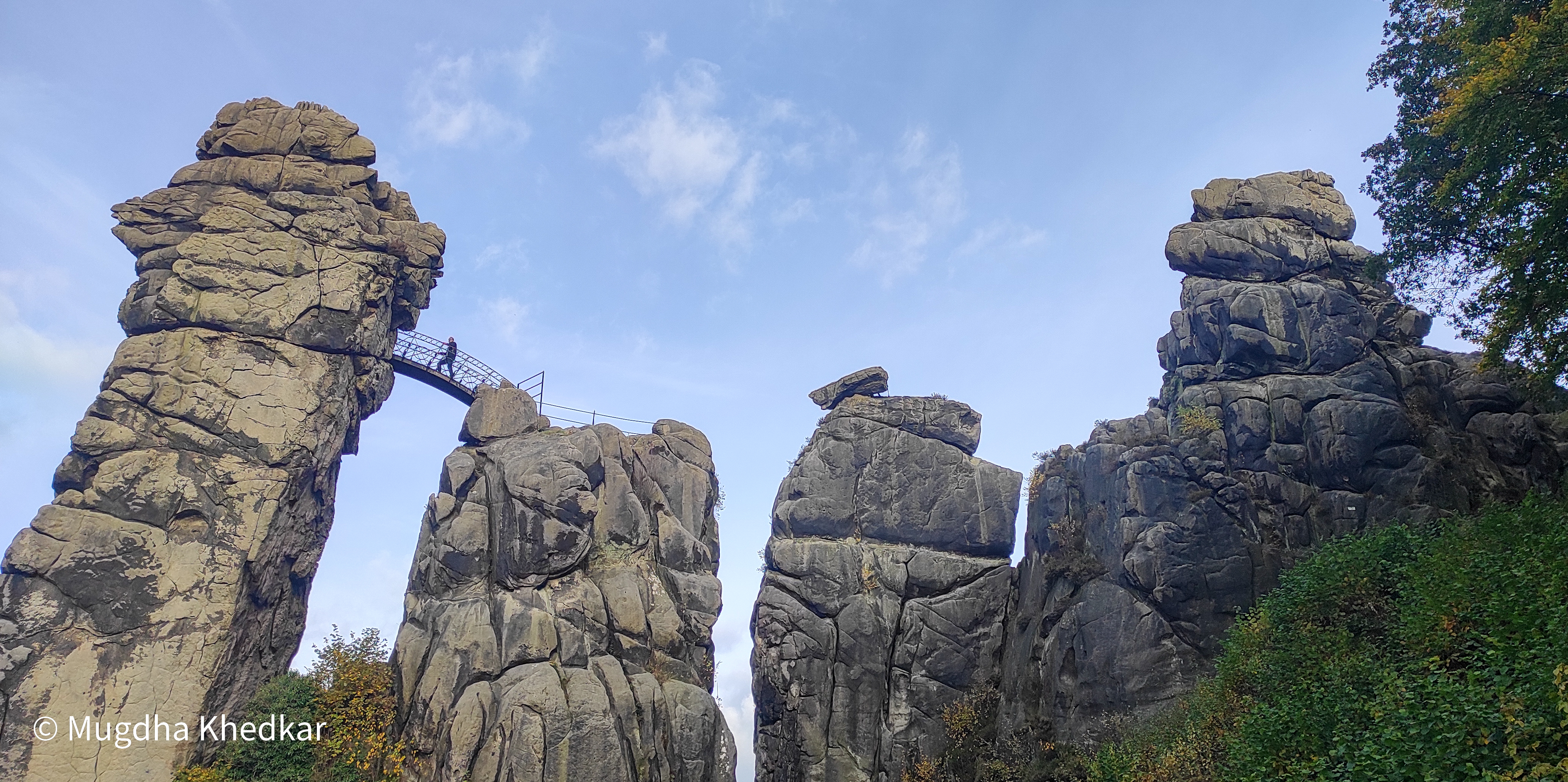
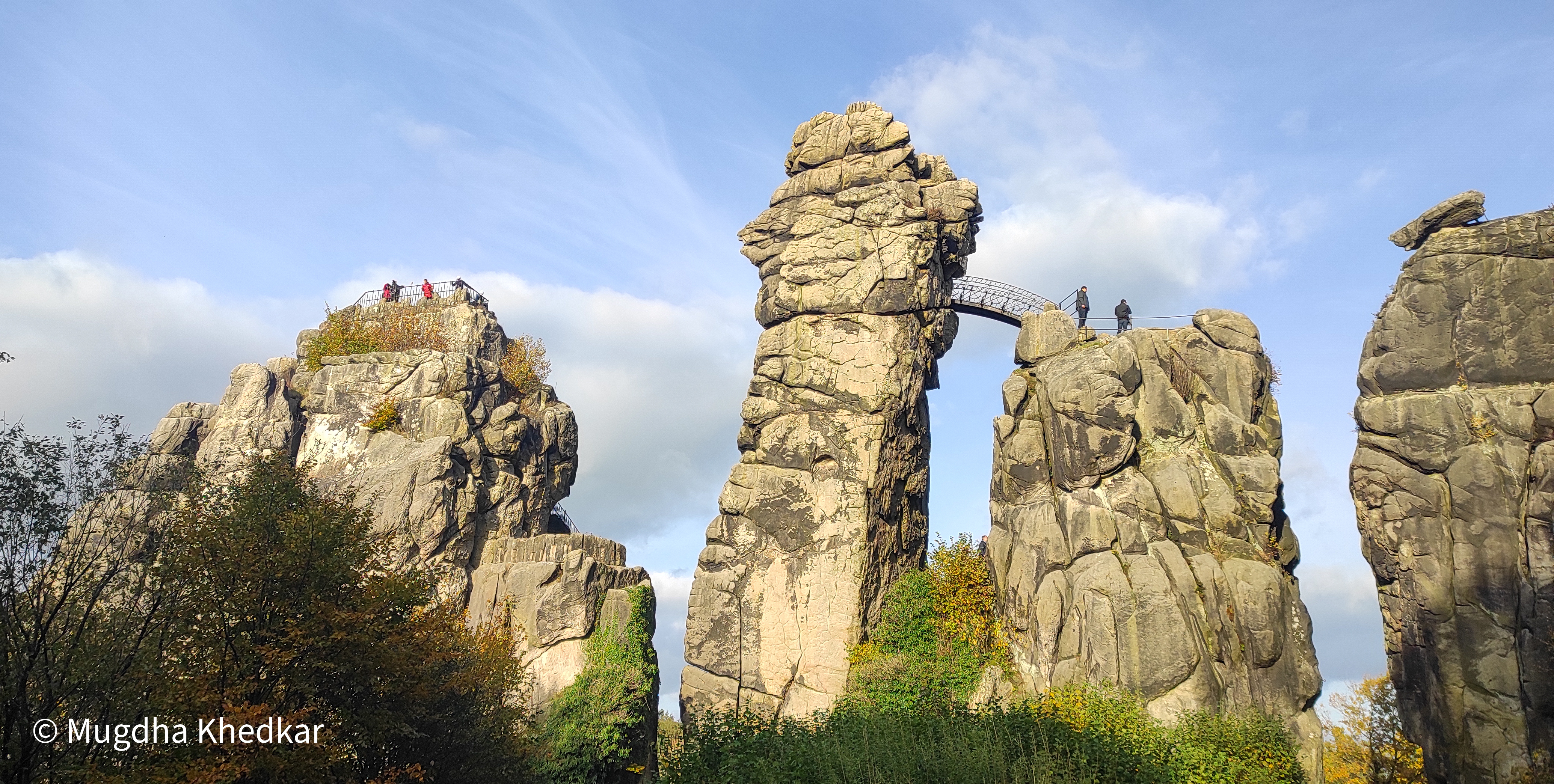
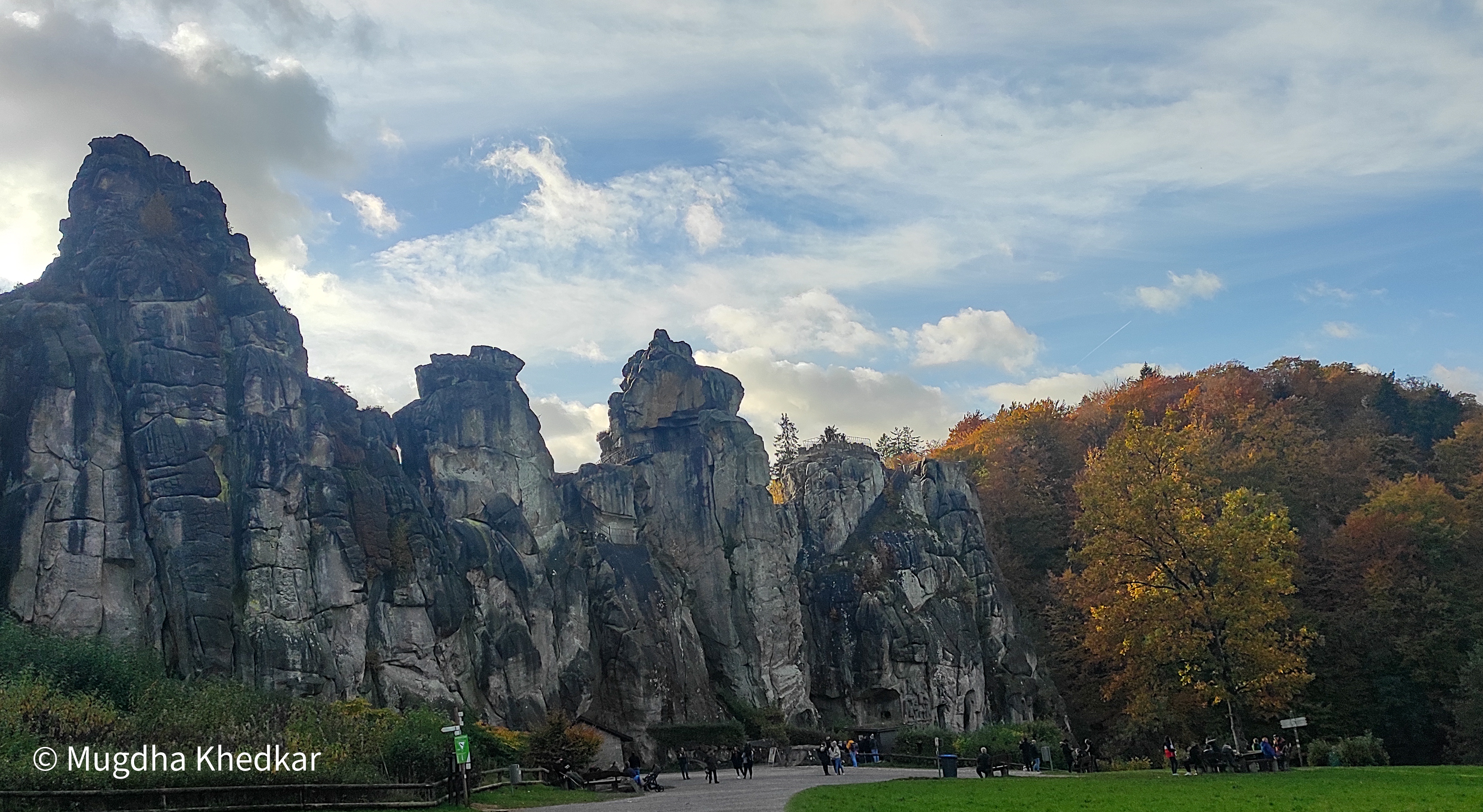
In 1926, the Externsteine were declared “one of the oldest and most important nature reserves in Lippe” and were placed under protection. During the period of Nazi rule, the Externsteine became a focus of nationalistic propaganda. Teudt was put in charge of additional excavations at the site and initiated the demolishing of tourist infrastructure (tramway, hotels). He used the Serbian prisoners of war for the project. Since the 1950s, the Externsteine were developed into a popular tourist attraction.
Today, between a half to one million people annually visit the stones, making the Externsteine one of the most frequently visited nature reserves in NRW. You could argue that the Externsteine, due to their popularity, are not “hidden” treasures of NRW. They however make for a beautiful picnic spot and a great tourist attraction. What makes them even more special is that they are a sudden outcropping of sandstone in a region that is otherwise largely devoid of rocks. The small lakes of the Wiembeck valley provide exceptionally pretty views, especially the main body of water, which produces beautiful reflections of the gigantic cliffs. Autumn might be the best season to visit the Externsteine, because I could witness a colourful palette of fall colours. The Externsteine proved to be a relaxing half day excursion on a busy Saturday2, and left me refreshed for the next week!
